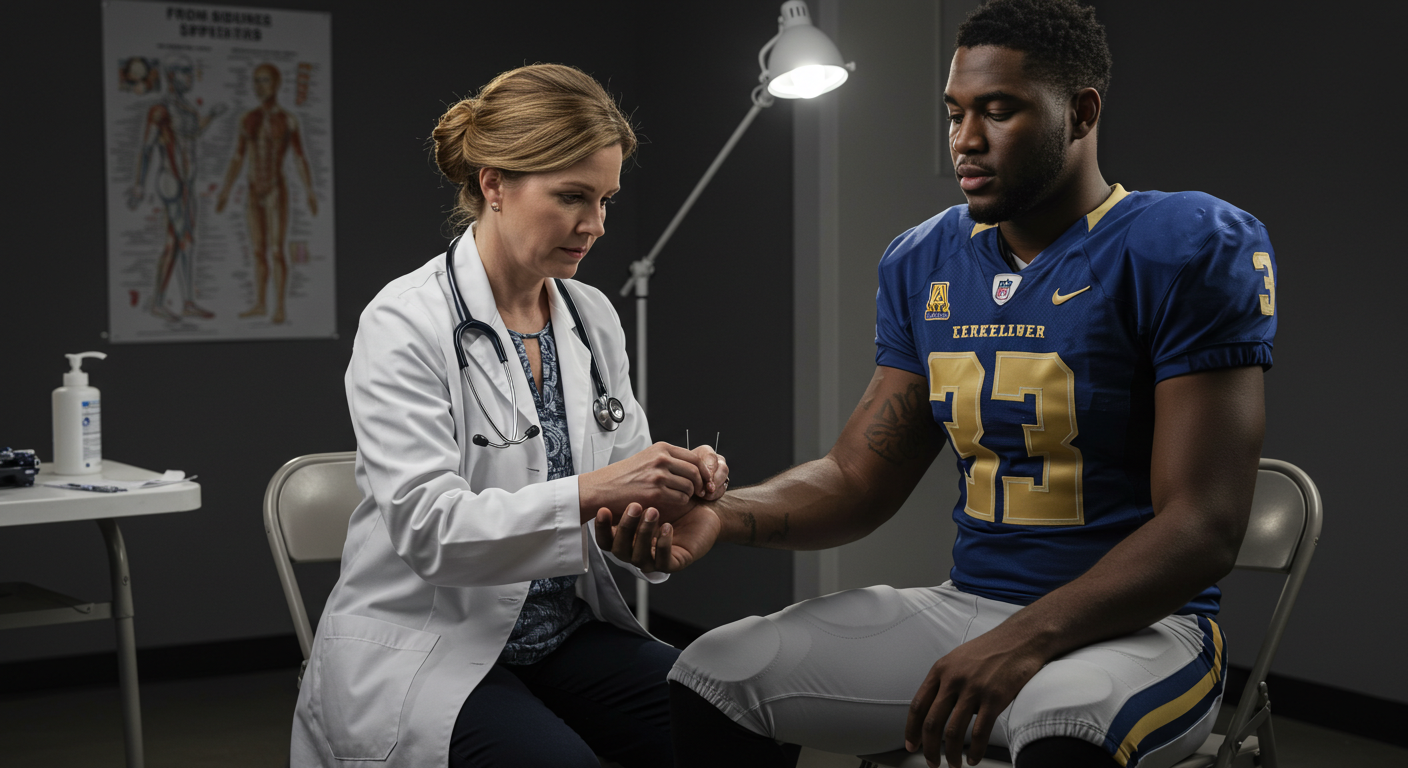
Introduction: Faster Recovery Is the New Winning Edge
In competitive sports, time off the field can be just as critical as performance on it. Every day spent sidelined means missed opportunities, weakened form, and, in many cases, a psychological setback for athletes eager to get back in the game. Traditional rehabilitation, while effective, often takes time—sometimes longer than athletes and teams can afford. This is why more professionals are turning to acupuncture for sports injuries as a way to accelerate healing, reduce inflammation, and manage pain without relying solely on pharmaceuticals.
From sprinters with hamstring tears to swimmers with shoulder strain, athletes across disciplines are finding that acupuncture offers a natural, science-backed path back to the spotlight.
Why Recovery Time Matters More Than Ever
Modern athletics isn’t just about talent—it’s about durability. With more frequent games, intense training sessions, and year-round competition schedules, recovery has become a cornerstone of peak performance.
- Injury prevalence is high: According to the NCAA Injury Surveillance Program, nearly 30% of college athletes report at least one sports-related injury per season.
- Time pressure is real: For elite athletes, missing a few weeks can mean losing a championship opportunity.
- Long-term consequences: Poorly managed recovery can increase the risk of reinjury or chronic pain.
This is why acupuncture isn’t just being seen as “alternative care” anymore—it’s becoming an integrated part of sports medicine programs worldwide.
How Acupuncture Works in the Athlete’s Body
To understand the value of acupuncture for sports injuries, you need to look at how it interacts with the body’s natural healing systems.
- Pain modulation: Acupuncture stimulates nerve fibers, releasing endorphins and reducing pain perception.
- Inflammation control: Studies show that acupuncture can down-regulate pro-inflammatory markers like TNF-α and IL-6.
- Circulation boost: Increased blood flow promotes oxygen delivery and speeds up tissue repair.
- Neuromuscular balance: It helps relax tight muscles while reactivating inhibited ones, improving mobility and coordination.
In short, acupuncture doesn’t just mask symptoms like painkillers—it encourages the body to repair itself more efficiently.
Acupuncture for Sports Injuries: Where It Makes the Biggest Impact
Athletes experience a wide spectrum of injuries, from acute strains to overuse syndromes. Here’s where acupuncture shines:
1. Muscle Strains and Tears
Hamstring and quadriceps strains are among the most common sports injuries. Acupuncture speeds recovery by reducing inflammation and preventing scar tissue from hardening.
2. Tendon and Ligament Issues
Tennis elbow, Achilles tendonitis, and ACL sprains often sideline athletes for months. Incorporating acupuncture for sports injuries into rehab helps manage pain and stimulates local healing in connective tissues.
3. Shoulder and Rotator Cuff Injuries
Throwing athletes and swimmers frequently struggle with shoulder problems. Acupuncture relieves pain, restores range of motion, and complements physical therapy.
4. Chronic Overuse Syndromes
Runners battling shin splints or cyclists dealing with knee pain often benefit from acupuncture’s ability to reduce repetitive strain inflammation.
Case Studies: From Sidelines Back to Play
- NBA Example: Several NBA teams, including the Lakers, have integrated acupuncture into their medical programs. Players credit it for reducing soreness and extending their careers.
- Olympic Use: Acupuncture has been part of Olympic-level sports medicine since the 2008 Beijing Olympics, where athletes used it to recover faster between events.
- Local Practice Data: A study published in the British Journal of Sports Medicine showed that athletes receiving acupuncture for ankle sprains returned to play on average one week faster than those using conventional rehab alone.
Complementing Modern Rehabilitation
One of the biggest strengths of acupuncture for sports injuries is how seamlessly it blends with other rehab methods.
- With Physical Therapy: It reduces pain, making stretching and strengthening exercises more tolerable.
- With Chiropractic Care: Acupuncture relaxes soft tissue, allowing adjustments to hold more effectively.
- With Massage and Myofascial Release: It softens adhesions and improves muscle elasticity.
Instead of being viewed as an alternative, acupuncture is now seen as an enhancer—something that improves the effectiveness of conventional rehabilitation.
Why Athletes Are Ditching Painkillers
Non-steroidal anti-inflammatory drugs (NSAIDs) and opioids have long been staples of injury management, but their risks are well documented: stomach ulcers, liver strain, and even addiction.
Acupuncture provides a drug-free way to manage pain and inflammation. For athletes subject to anti-doping regulations, this is a game-changer. They can pursue recovery without worrying about banned substances or side effects.
The Mental Recovery Factor
Injuries don’t just harm the body—they shake confidence. Many athletes experience anxiety about re-injury or frustration with slow healing. Acupuncture also supports mental recovery by:
- Reducing stress through endorphin release
- Improving sleep quality
- Enhancing mood stability
This holistic benefit is why many athletes view acupuncture as a full-body recovery tool, not just a pain treatment.
How to Get Started with Acupuncture for Sports Injuries
If you’re an athlete—or even a weekend warrior—consider these steps:
- Find a licensed acupuncturist with experience in sports medicine.
- Combine acupuncture with your rehab plan, not instead of it.
- Track your progress, noting improvements in pain, mobility, and performance.
- Stay consistent, since cumulative treatments often yield the best results.
Conclusion: From Bench to Spotlight
The path from injury to performance doesn’t have to be a long, frustrating road. By integrating acupuncture for sports injuries, athletes gain a recovery advantage that gets them back in play faster, stronger, and more confident.
As more teams, trainers, and individuals recognize acupuncture’s ability to complement modern rehab, its role in sports medicine will only grow. From sidelines to spotlight, acupuncture is proving to be a winning edge in the world of athletic recovery.